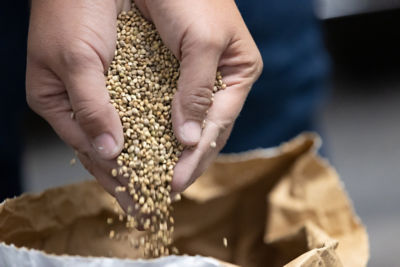Causal Agent
Cucumber mosaic virus (CMV)
Vector
Many species of aphids
Worldwide
Symptoms
Symptoms can vary greatly depending upon the affected variety, age of the plant at the time of infection and the strain of the virus. Leaves may become narrow, distorted and mottled. In peppers, defoliation may occur when mature plants are infected. Tip dieback and leaf discoloration in an “oak-leaf” pattern may develop. Infected plants are usually stunted and the fruits distorted with occasional concentric rings. Infection of young plants results in unmarketable fruit and severe yield losses.
 Characteristic “oak-leaf” pattern.
Characteristic “oak-leaf” pattern.
Conditions for Development
The host range of CMV includes as many as 800 plant species. The virus is acquired by aphids and is transmitted from plant to plant in a non-persistent manner. CMV often remains in infected alternate hosts near agricultural areas and is transmitted to peppers and eggplant when environmental conditions support disease development. This virus is also mechanically transmitted.
Control
Control aphids, and rogue-infected plants to reduce the incidence of CMV in greenhouse crops. In field-grown peppers and eggplant, eliminate adjacent weeds and ornamentals, and use reflective mulches to deter aphids and a combination of stylet oil and insecticide sprays to reduce losses caused by this virus. Controlling the aphid vector population with chemical treatment is very difficult and generally provides limited control. In mature plants, it is difficult to achieve complete insecticide coverage of leaves to effectively eradicate all aphids. Resistant varieties are available in pepper.




